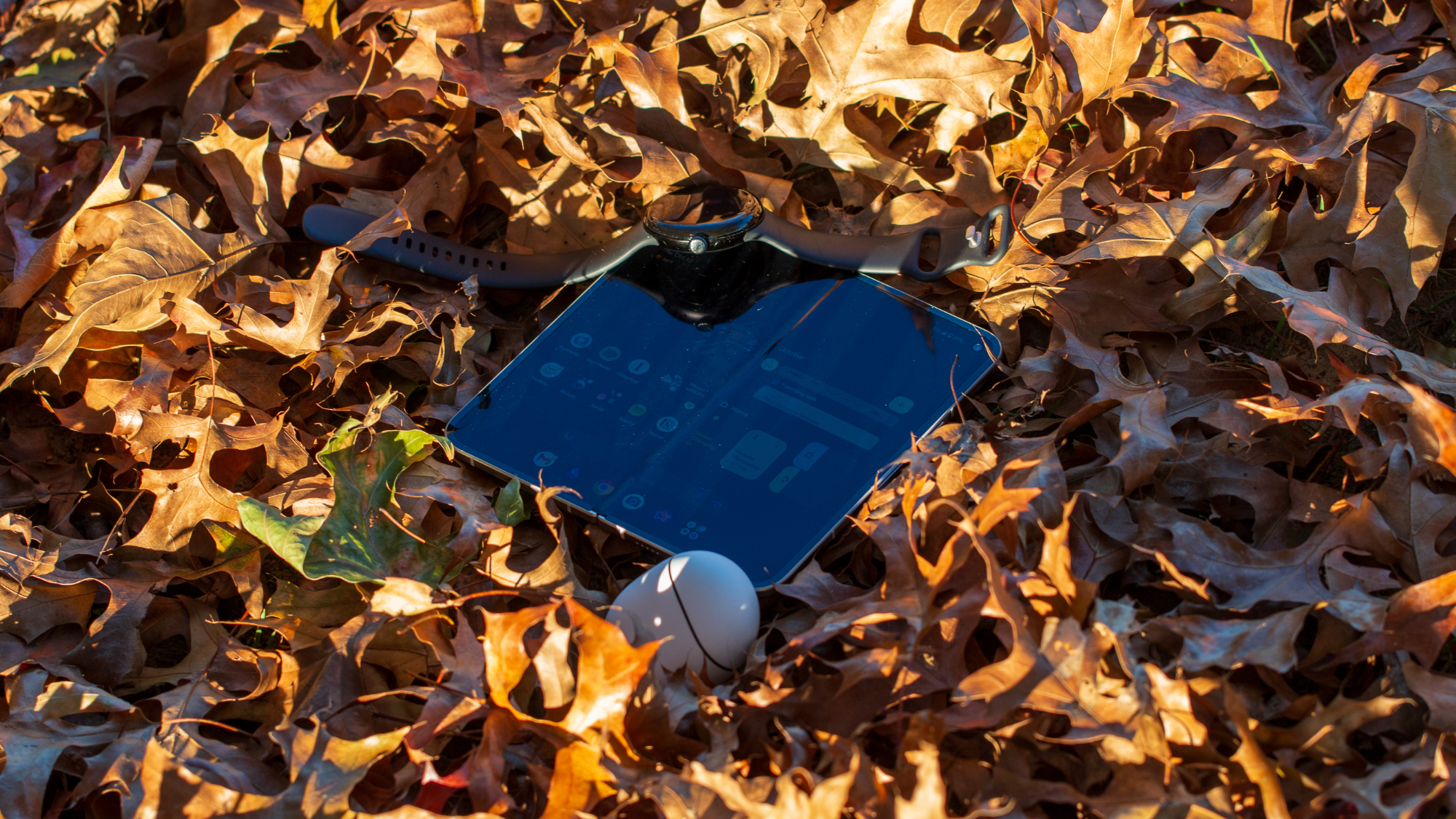
Almost a year after making a splash in the foldable scene, Google is back again with the Pixel 9 Pro Fold. While there are plenty of changes to be found across the board, there is still a lot to be concerned about Google's plans for its future foldable phones.
That being said, Google marched forward, seemingly committed to offering an alternative option to Samsung's Galaxy Z Fold line. Considering that the options in North America are already slim, I'm happy to see the 9 Pro Fold hit the market, even if it looked exactly like the original Pixel Fold.
Thankfully, that's not the case here, as Google went back to the drawing board, and not just for the design. There are a bunch of new software features that you'll only find on Google's foldable phone, all aiming to provide the best Pixel experience that money can buy.
Google Pixel 9 Pro Fold: Price and availability
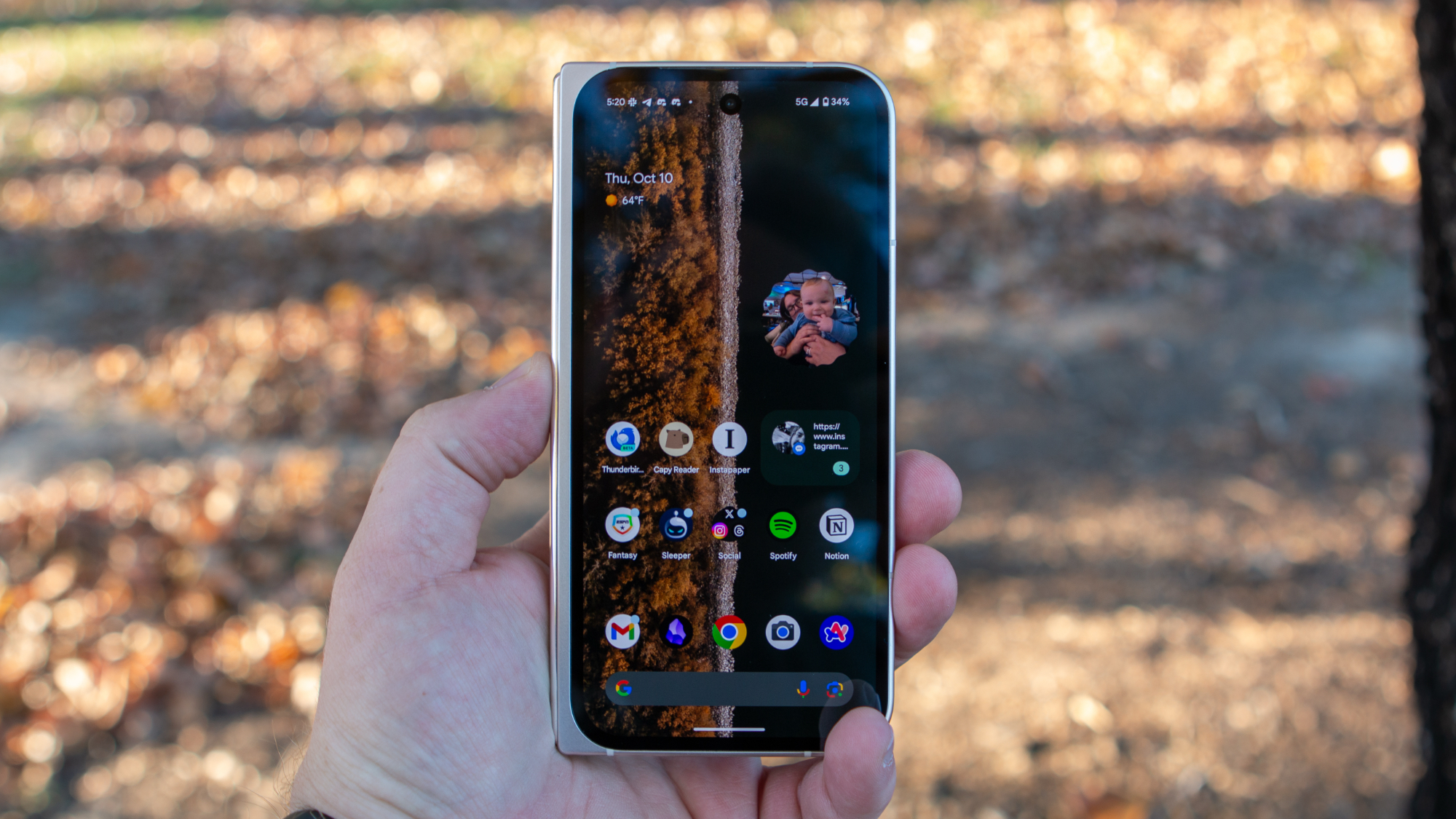
The Pixel 9 Pro Fold was announced at the Made by Google event on August 13, 2024, alongside the rest of the Pixel 9 lineup, Pixel Buds Pro 2, and Pixel Watch 3. There are only two configurations available, as the 9 Pro Fold comes with either 256GB or 512GB of storage. These arrive with a price of $1,799 or $1,919, respectively.
Regardless of which storage option to choose from, everything else about the device remains the same. This includes featuring 16GB of RAM across both configurations. Additionally, the Pixel 9 Pro Fold comes in two colors, as you can get Google's latest foldable in Obsidian or Porcelain.
Google Pixel 9 Pro Fold: Design and displays
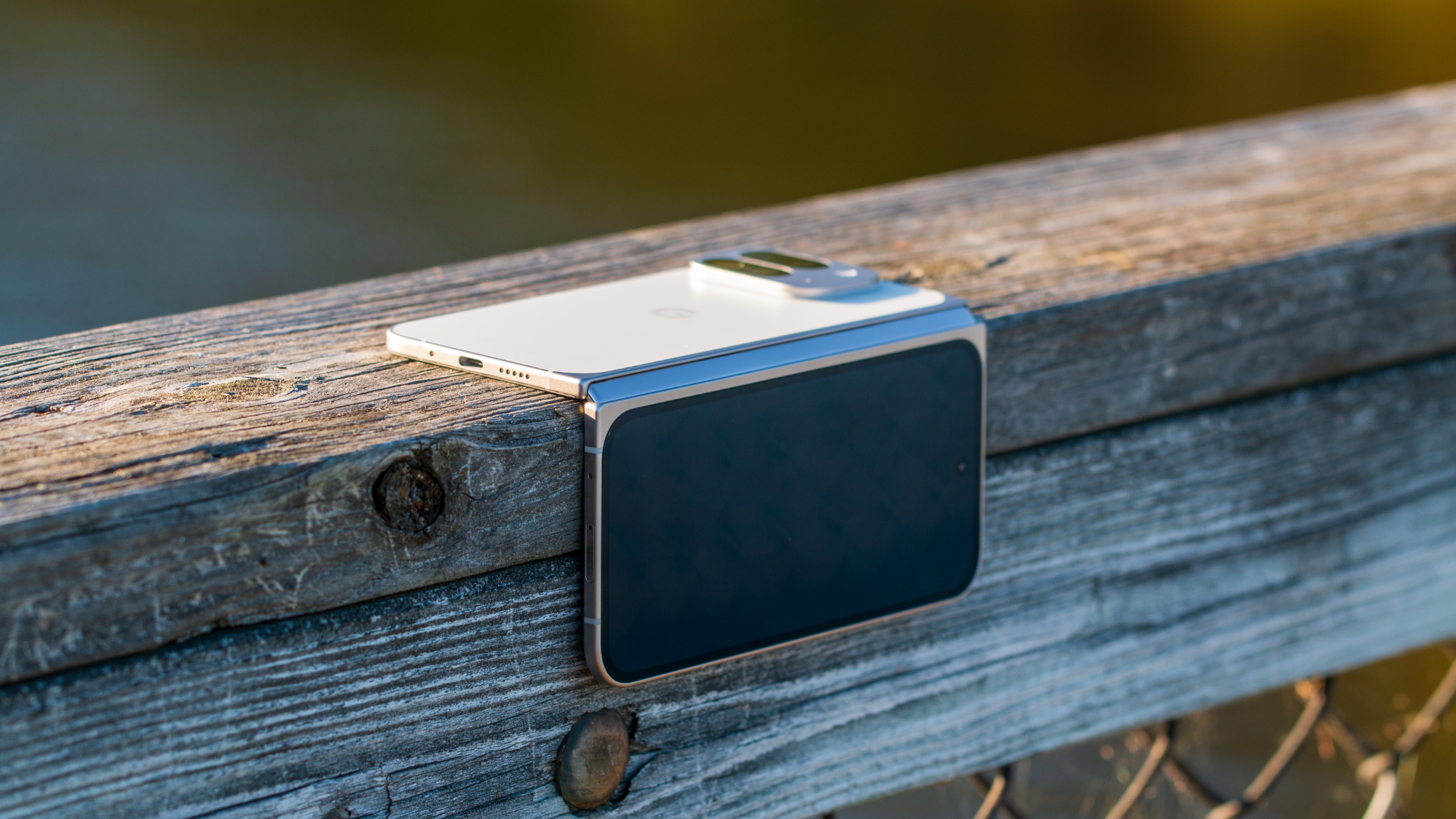
Going into the year, I wasn't exactly sure whether Google even had plans to release a successor to the Pixel Fold. Part of it was because of how divisive the company's first foldable phone was. On the one hand, it was great to see Google take this new form factor more seriously. On the other, it almost felt like the Pixel Fold was already out of style.
Google seems to be laser-focused on creating the thinnest* foldable. Really, it's just that Google wants something that can help it stand out from the crowd here in North America. Even with reports claiming that the Galaxy Z Fold 6 is falling short of expectations, it's still Samsung's world that we're living in.
Now that I've spent some time with the Pro Fold, I've really come to appreciate its premium design. Unlike last year's model, Google's latest foldable does not look or feel cheap.
The only problem that I've had is that it's just a bit too slippery to use comfortably without a case. It's not so much that I don't think the 9 Pro Fold would be able to withstand a drop or two. Instead, I'm more worried about mucking up this beautiful device. Most of the time, the phone is housed in the excellent Thinborne case, but I've found myself just taking it out of the case just to admire the way it looks and feels.
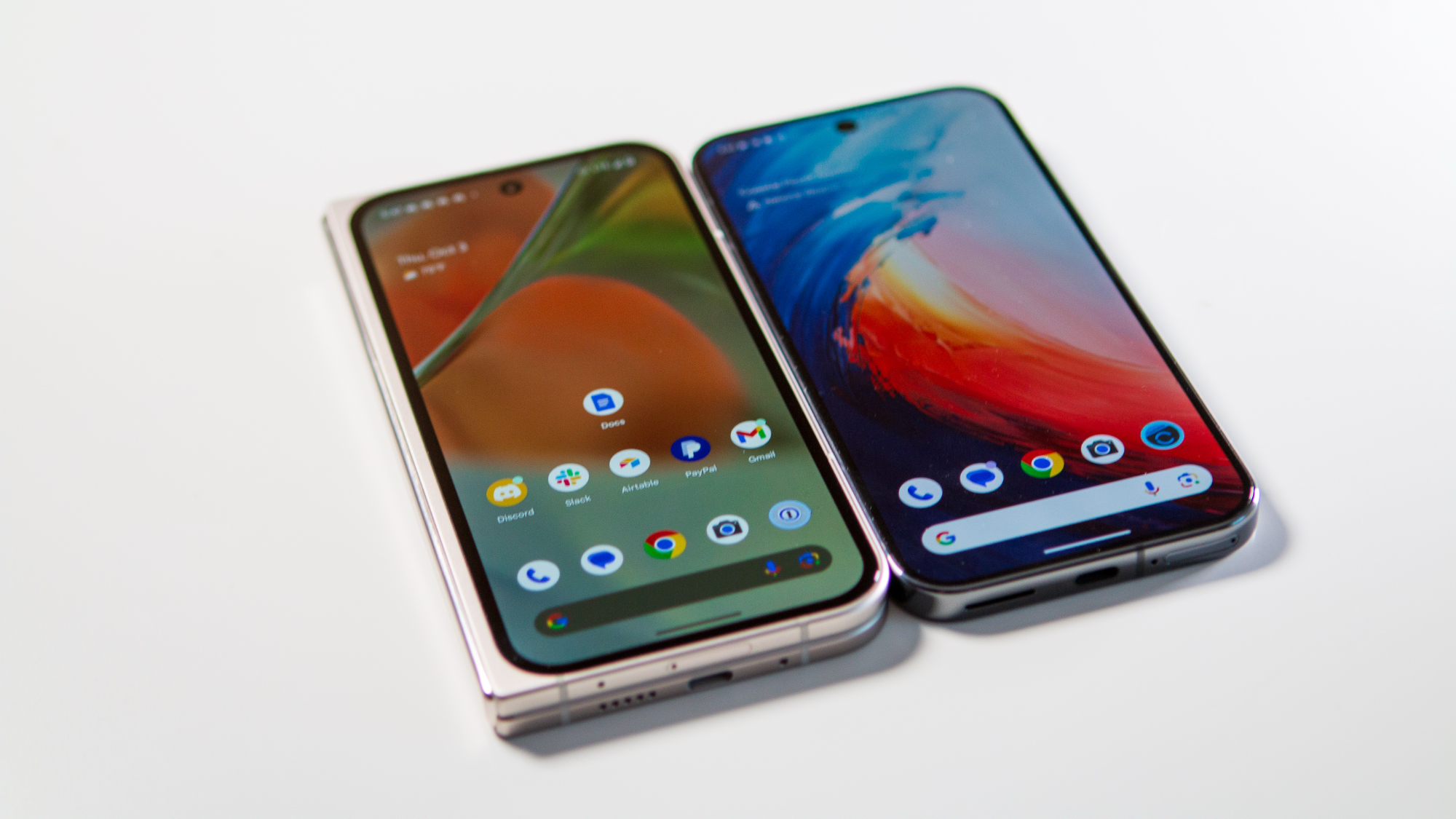
The cover screen is small and wide enough to rely on it more than I anticipated. It's a "problem" that I had with the original Pixel Fold, along with the OnePlus Open, as I just don't find myself unfolding it as frequently as I did with the Fold 6.
In reality, it's not actually a problem; it's just something that I find funny. The best way I can think of to explain this is that the Fold 6 entices you to open it whenever you want to do something more than turn on some lights or respond to a text. at the same time, the 9 Pro Fold aims to provide a traditional phone experience with the added bonus of offering a larger screen if you want it.
Speaking to that larger screen, I really just don't find myself using it all that often, unless I want to play a game or need to do some split-screen multitasking. Well, there is one other reason, but I'll get to that in a bit.
That's not to say that the inner screen is bad, as that couldn't be further from the truth. You won't find headlines about the 9 Pro Fold not being able to fold flat or that the crease feels like you're running your finger across a canyon. It's just about as perfect as it can get, at least compared to other foldable phones that I've used and tested.
Google Pixel 9 Pro Fold: Performance
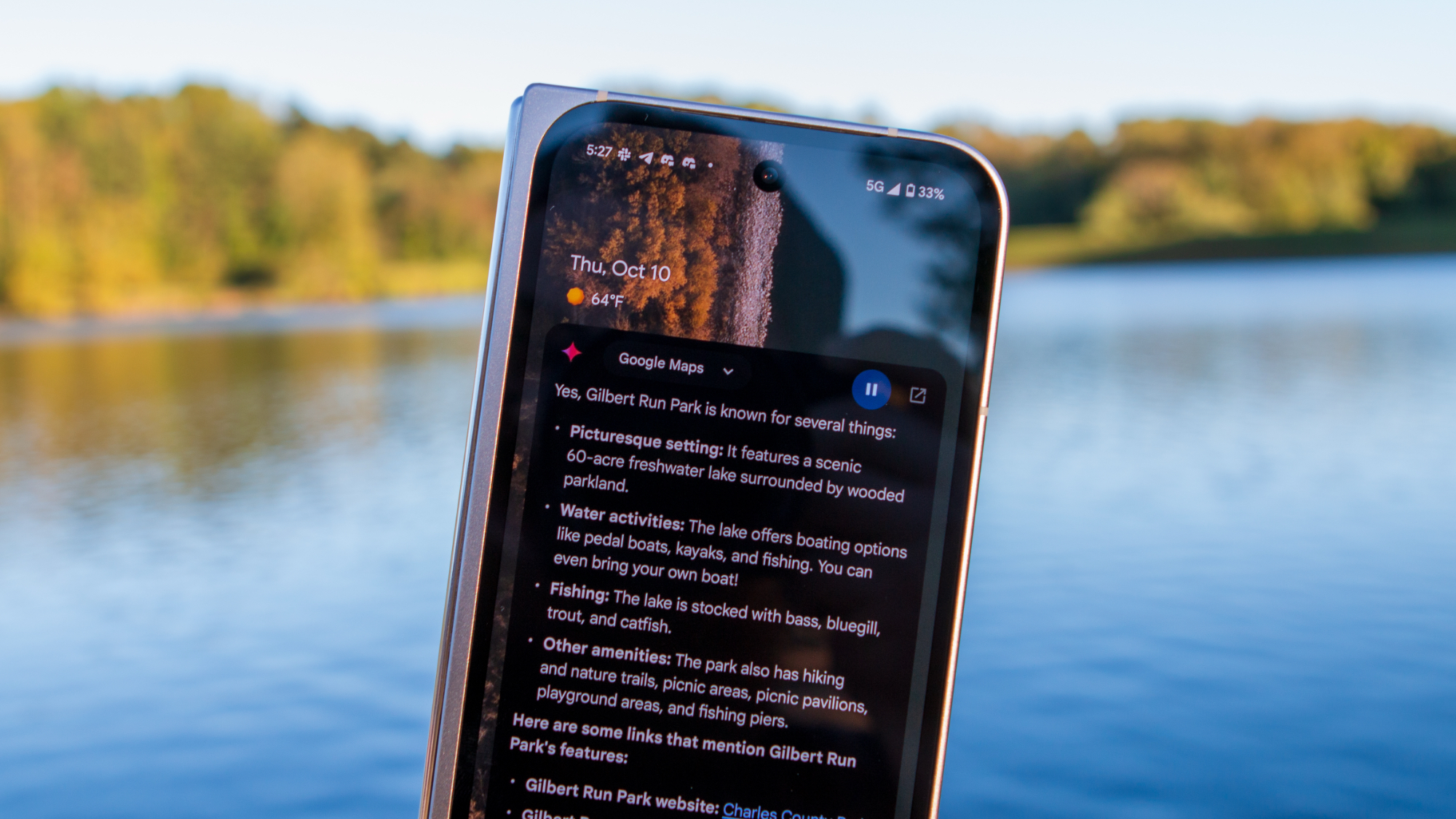
In a perfect world, Google's Tensor series of chips would be able to rival Qualcomm, but we're simply not there yet. The Tensor G4 in the Pixel 9 lineup doesn't offer a lot in the way of overly meaningful improvements compared to the G3. Instead, Google opted for the "safe" approach of optimizing it for better battery life and for Gemini.
Sure, I wish this weren't the case and that Google was able to really take the battle to Samsung and Qualcomm. But, seeing as this is the hand we've been dealt, there's really not much I've found to complain about. Day-to-day tasks are a breeze, battery life lasts all day, and I can play most of the games I want to.
The only exception to this, that I've found so far, is that I haven't been able to use a Switch emulator. However, part of this is likely due to the drivers not being compatible with the emulators I'm using.
It could also just be the emulators themselves, as I haven't run into any other problems when using the 9 Pro Fold as a portable retro handheld. Still, it's rather curious seeing as every other Android phone and handheld I have is able to at least boot into a game, whereas I can't even make it that far with the 9 Pro Fold.
Besides that, I haven't run into very many issues in my time with the phone. The problems that I have dealt with have more to do with apps not working properly. With that, I put the onus and blame on app developers who continue to act as though foldable phones don't exist. I'm looking at you, Discord and 1Password.
One gripe that I do have is that I really wish there was a way to put a third app on the screen. There have been more than a few times that I had two apps open and wanted to open a third, only to remember that it wasn't possible. The most common scenario has been wanting to have the three different fantasy football apps that I use open at the same time.
A more frustrating occurrence is when I'm using two apps and need to fill in a password. Sometimes, 1Password works as intended, offering to auto-fill the password for me. But there are times when this isn't the case, so I need to switch over, go back to the split screen, paste the password, and then go back to copy my 2FA code before switching back again to paste that.
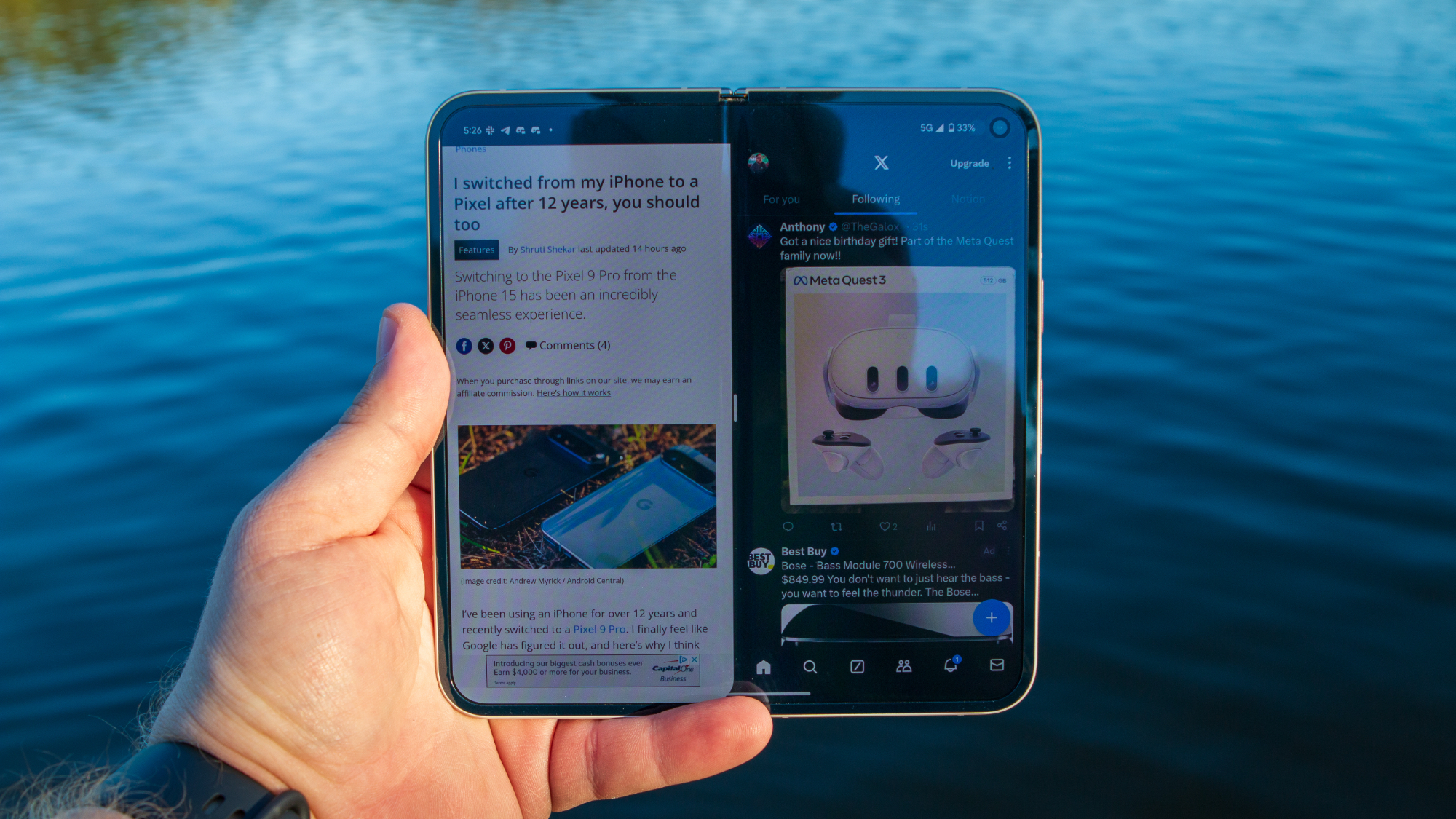
For a type of device that is meant to be more efficient, that's definitely not always the case. Of course, this is probably a niche problem, but it's something that's really annoyed me about the two-apps-only approach.
My other gripe is with the Pixel Launcher, but this probably won't come as much of a surprise to some. I want more customization options within the launcher, starting with the icon grid size on the Home Screen.
I understand the cohesion that Google is trying to achieve between the inner and outer screens. The problem is that I want the ability to have more options than just 4x4, 4x5, or 5x5. It looks fine, most of the time, but if you lower the text size and screen zoom, everything just looks rather comical.
Can we please have more home screen customization options?
In a perfect world, this could be solved by a third-party launcher, like Nova or Lawnchair, but that just isn't the case. Yes, I know all about Niagara Launcher and it's pretty darn wonderful, but that changes things to a completely different interface.
As it currently stands, I highly doubt that any of those potential changes would be implemented anytime soon. So while it's definitely possible to multitask on the 9 Pro Fold, there are limitations that might slow you down a bit.
Google Pixel 9 Pro Fold: Gemini and AI
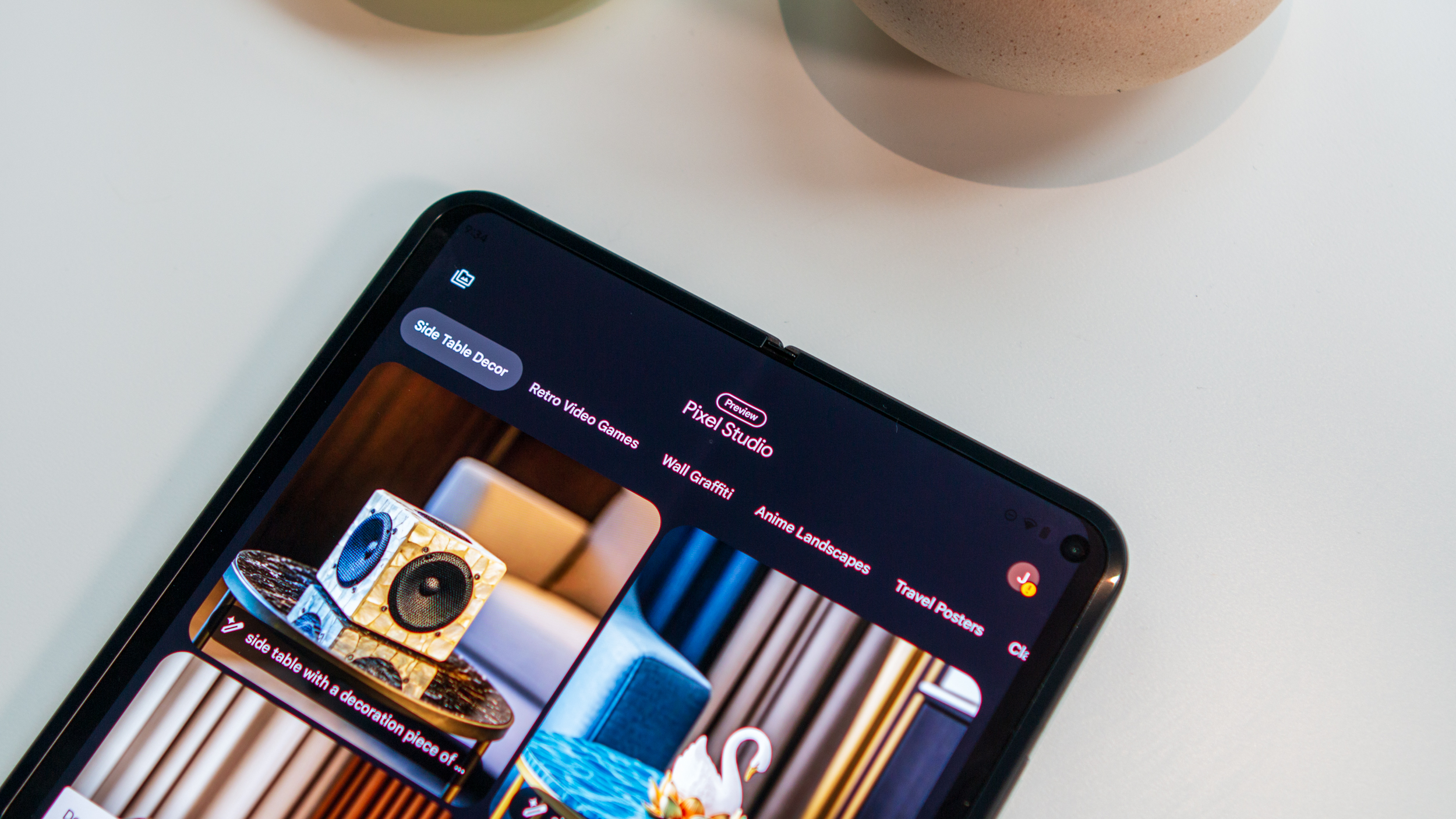
Attempting to use AI is a funny and fickle thing. Sometimes, everything just works, and it feels like we're actually living in the future. Only to come crashing back down to Earth the next time they try to do something. This is something that is very obvious when using practically any of the various AI services.
However, it's a little bit different when AI is one of the key selling points as to why you should buy a phone. Google's throwing Gemini into anything and everything it can, and it's been infused across the entire Pixel 9 lineup, including the 9 Pro Fold.
There's essentially no difference between using it on the $999 Pixel 9 Pro or the $1,800 Pixel 9 Pro Fold. At least when it comes to the capabilities and limitations of what Gemini has to offer.
Something I recently realized is that it feels like there's an untapped potential just below the surface. This is especially true of Gemini, as it's just a long-press of the Power Button away. Between hallucinations or just misinformation, it's becoming tough to really rely on it, even though I know it can be better.
This point was further proven to me on a recent trip to meet up with some friends who were in town for a couple of days. We were trying to decide where to eat, so I figured this was a good time to give Gemini a pretty easy task. Instead of just searching for restaurants around me, I took a picture of a restaurant and asked Gemini what was on the menu.
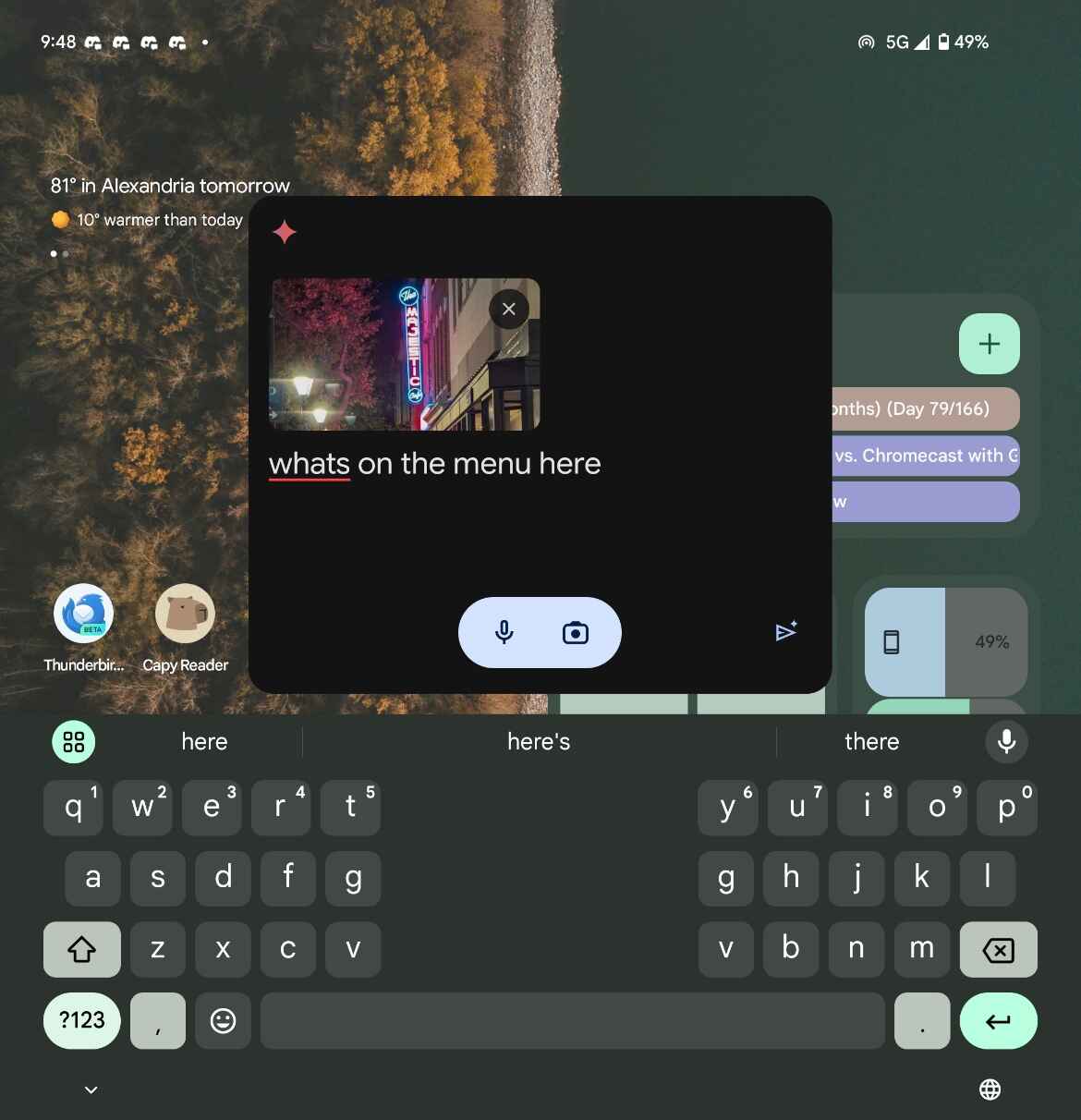
It reeled off everything from appetizers to entrees and desserts, without skipping a beat. Cool, I thought, this is perfect! Then I reached the bottom of the entry, only to realize that this wasn't the restaurant we were standing in front of at all. Not only that, but it was also for a restaurant halfway across the country.
I told Gemini that it wasn't the right restaurant and that the right one was in Alexandria. It responded with the address of the correct restaurant, asking for confirmation before providing me with "their popular dishes."
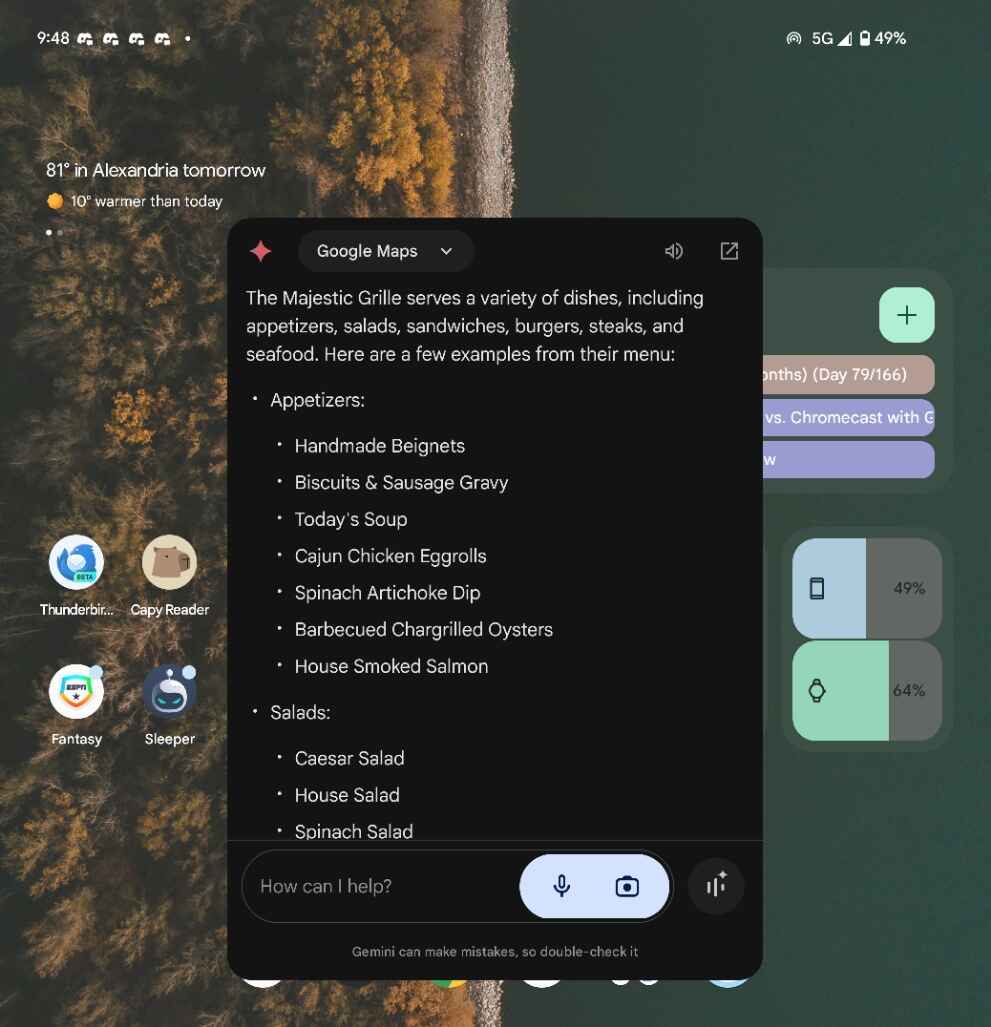
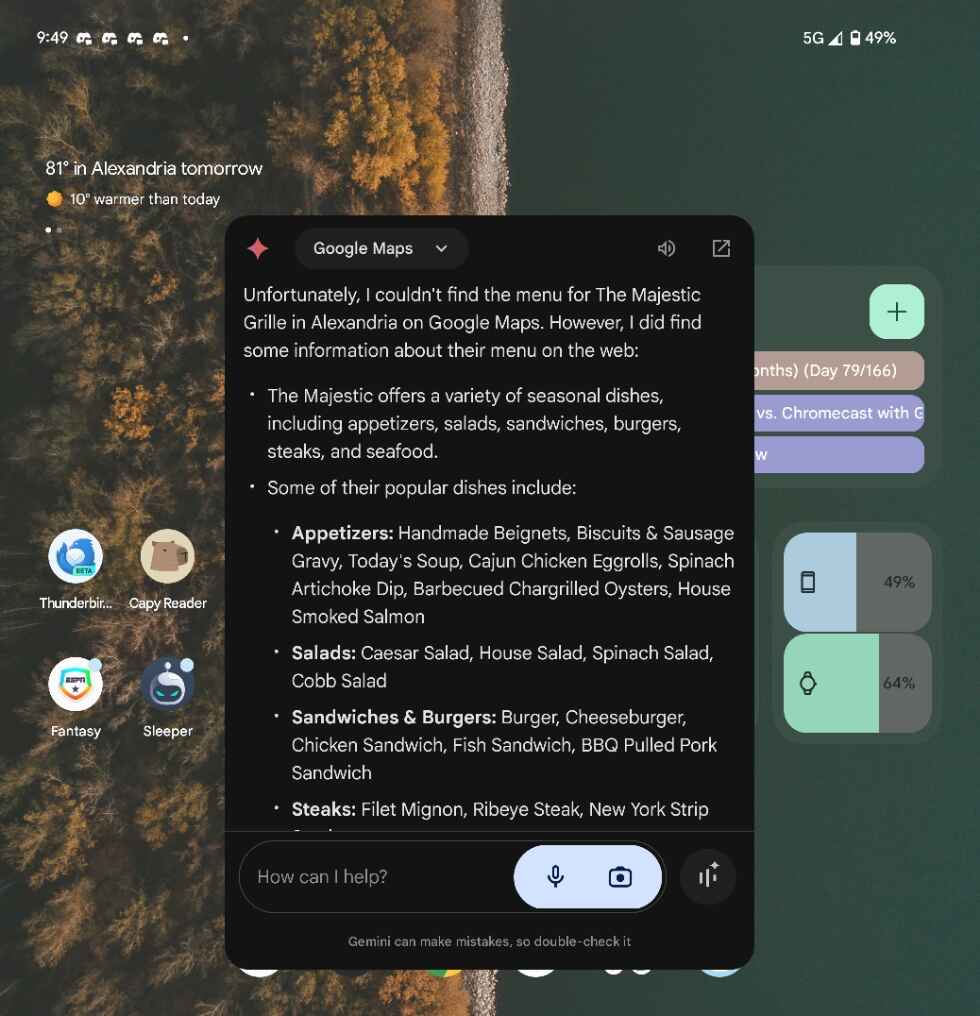
Don't get me wrong, I'm happy that Gemini managed to eventually provide me with the answer I originally asked for. I just don't understand how it came up with results from a restaurant that's almost 13 hours away. Maybe the picture that I used was too simple, or the restaurants have similar signage.
But if Gemini is analyzing an image, does that not include the metadata? That alone should have provided Gemini with all of the information I needed. It wasn't a screenshot or a picture I downloaded from the web, it was one that I took with my phone, standing in Alexandria, nowhere near Memphis.
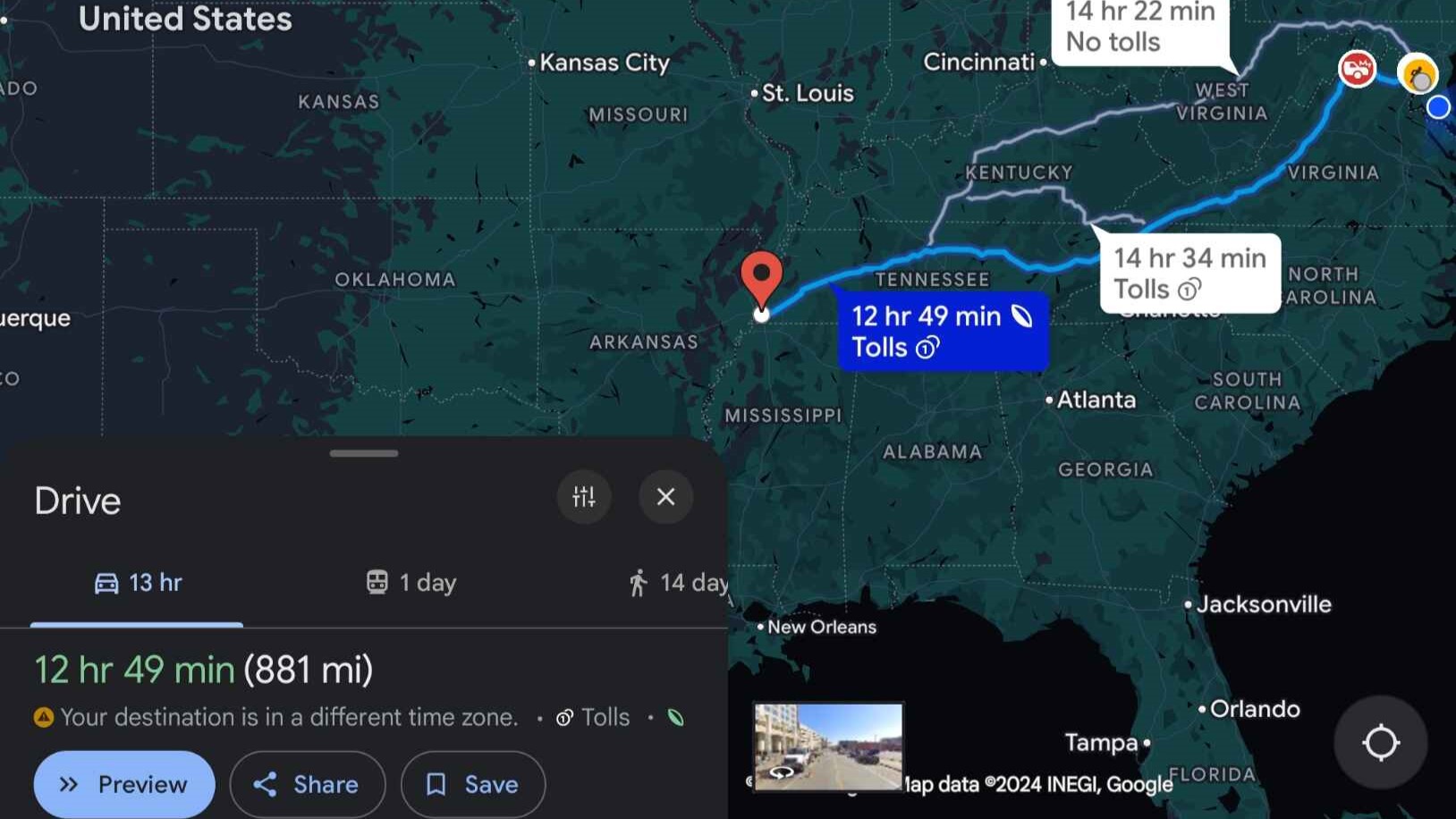
This has pretty much summed up what my experience with Gemini has been like in my time with the trio of Pixel 9 Pro models. It will work, but even with underlying guardrails in place, it still needs guidance. So essentially, Google wants us to pay for the "luxury" of being beta testers.
Personally, it doesn't bother me all that much. I'm a technology enthusiast and rather enjoy seeing how something progresses over time. That's not the case for everyone, and no matter how wonderful those commercials make Gemini look, it could end up being a detriment to Google in the long run.
And frankly, even that idea being a possibility just sucks. Google has finally caught up to Apple and Samsung in terms of hardware and the rest of the software experience. I just hope that Gemini doesn't push the company into going the wrong way.
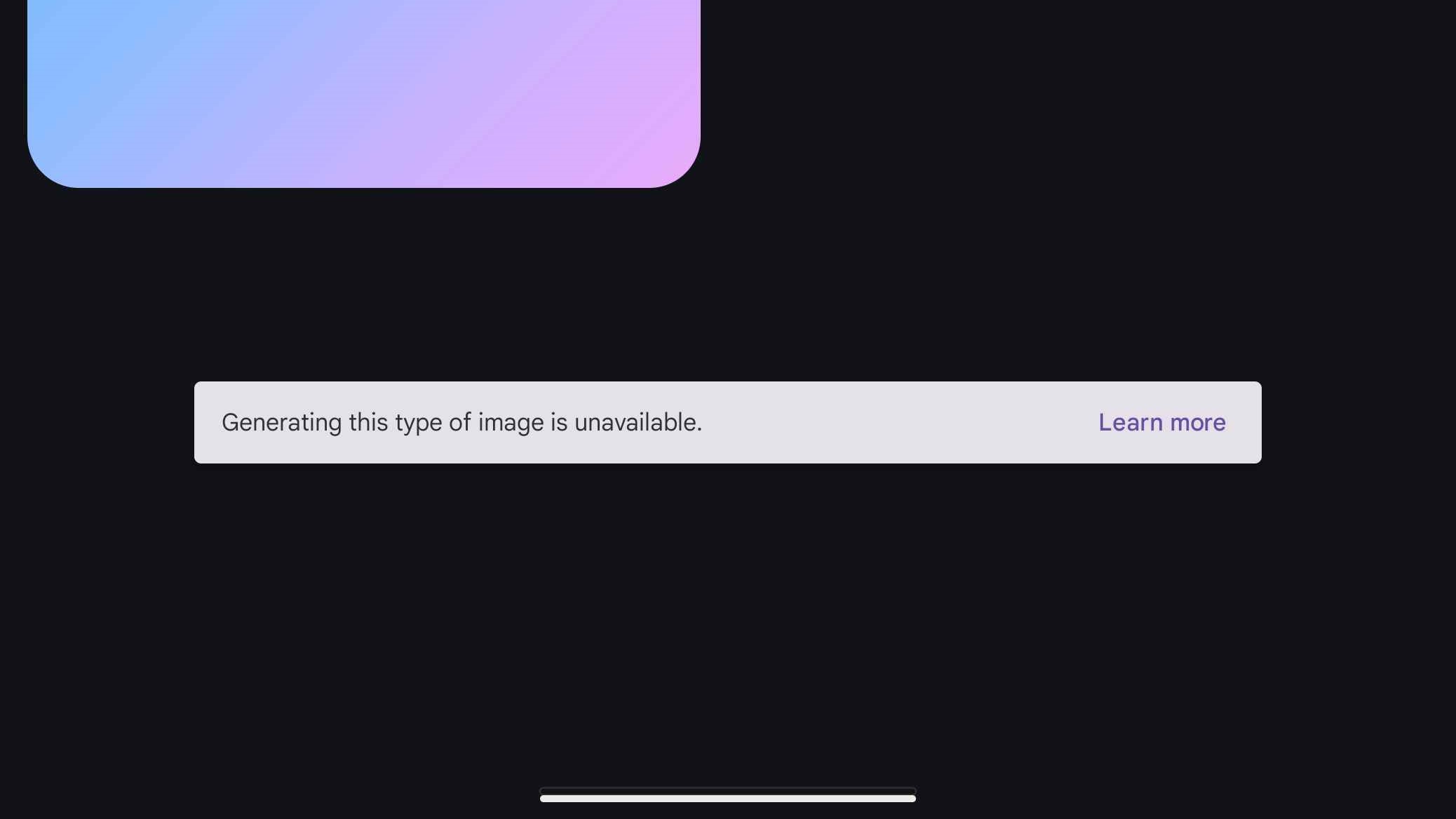
If you don't believe me, I recommend checking out some of the images that the folks over at The Verge were able to get Gemini to produce shortly after the Pixel 9 series was announced. Things could have gotten much worse in a world where misinformation and harmful AI generation is already a massive problem.
Thankfully, I have been unable to reproduce any images even remotely similar, regardless of whether it was in Pixel Studio or with the Reimagine feature. When attempting to do so, a message promptly appears, informing me that it isn't able to process the request. It also provides a link to Google's "Image restrictions" section within the Pixel Studio Support Page.
Google Pixel 9 Pro Fold: Battery life

As I pointed out in the Pixel 9 Pro review, I originally had higher hopes that the Tensor G4 would be able to go toe-to-toe with the Snapdragon 8 Gen 3. Unfortunately, this isn't the case when it comes to performance. However, there were some pretty massive improvements made in the efficiency department, which was another area where the 2023 Pixel lineup fell short.
While the 9 Pro Fold doesn't offer the same mind-bending battery life as its non-folding siblings, it's still quite a bit better than I expected. In order to back up my words with some numbers, I put the Pro Fold through the same video playback test that I used with the 9 Pro XL.
After changing all of the pertinent settings, I pulled up a 4K HDR video, and let it play on a loop for a few hours. Making sure to measure the battery life every hour.
The only difference between this test and the one from the 9 Pro XL was that the video was playing on the inner screen. I figured this would result in the battery draining faster, and that's exactly what happened. Not only that, but the phone was just a bit warm when I stopped the test for good. It wasn't hot to the touch, but even with a case on, I could feel a bit of heat coming through.
All-in-all, I'd say this is about what I would expect, especially when playing a 4K HDR video on a non-stop loop for four hours. However, this is more of an "extreme" use case, as I rarely would need to find a charger before the end of the day.
Speaking of which, this brings me to talk about actually charging the Pro Fold. Shortly after receiving the phone, I also received the Aramid Fiber Thin Case from Thinborne. This has become a favorite of mine, as it adds MagSafe capabilities to various Android phones while we wait for the Qi2 standard to be adopted.
One benefit is being able to enjoy the MagSafe charger that sits on my nightstand, removing the need to actually plug in my phone overnight. However, after being alerted to a potential issue by Thinborne, I came to the realization that the Pro Fold wasn't actually being charged.
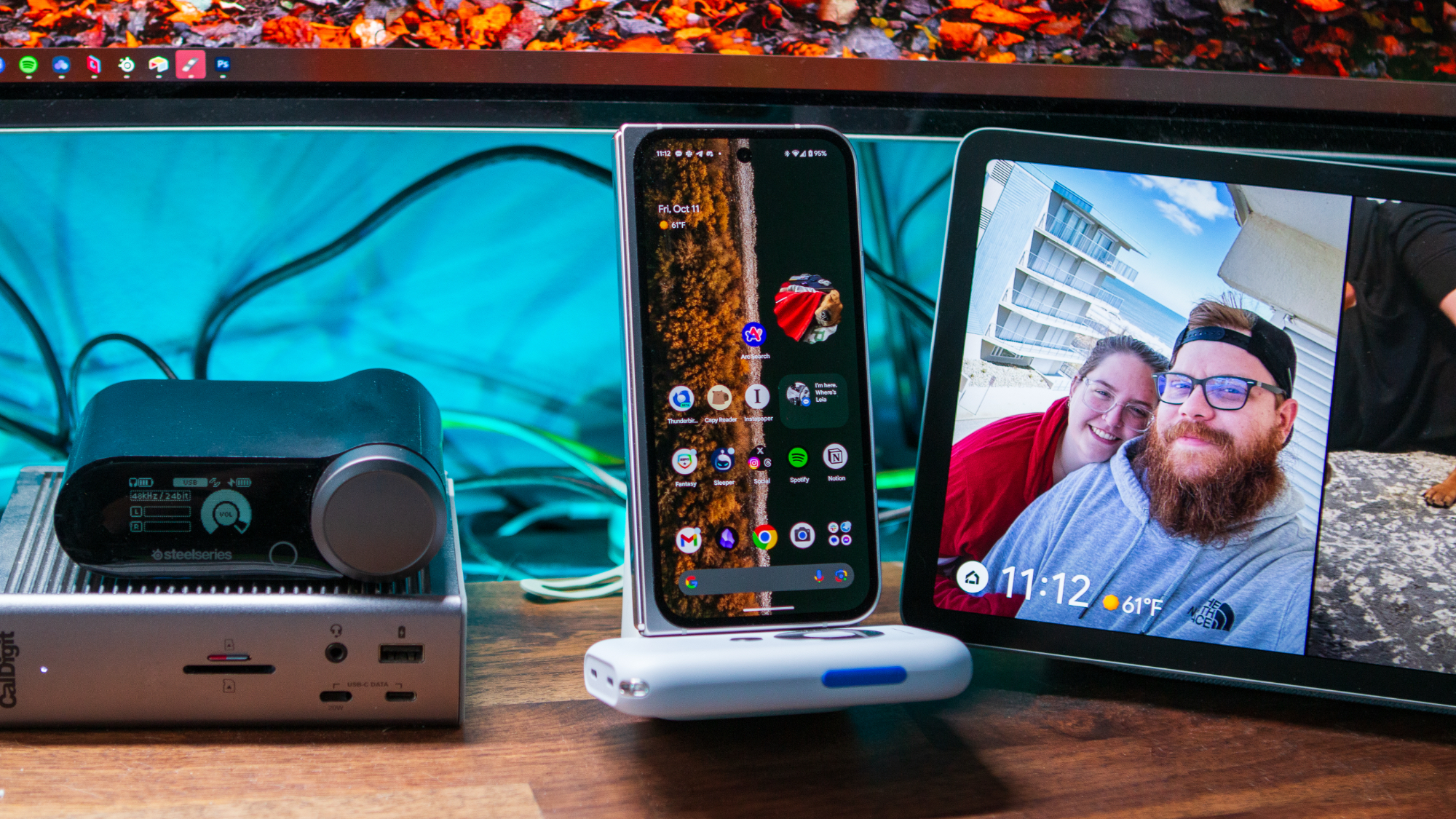
As it turns out, this is because Google moved the placement of the charging coil, something that wasn't discovered until after the official Google Support page went live. However, Thinborne was quick to recognize and rectify the situation, shipping me a case with proper alignment so that I could use MagSafe chargers with the 9 Pro Fold.
Unfortunately, those hoping to continue using the Pixel Stand V2 are a bit out of luck. The coils in Google's charging stand are just too high to be used with the 9 Pro Fold. There is a workaround, but it means that you'll need to find something to place between the lip of the stand and the bottom of your phone.
Your better bet would be to grab a couple of wireless chargers from Amazon, returning the ones that don't work.
Google Pixel 9 Pro Fold: Cameras
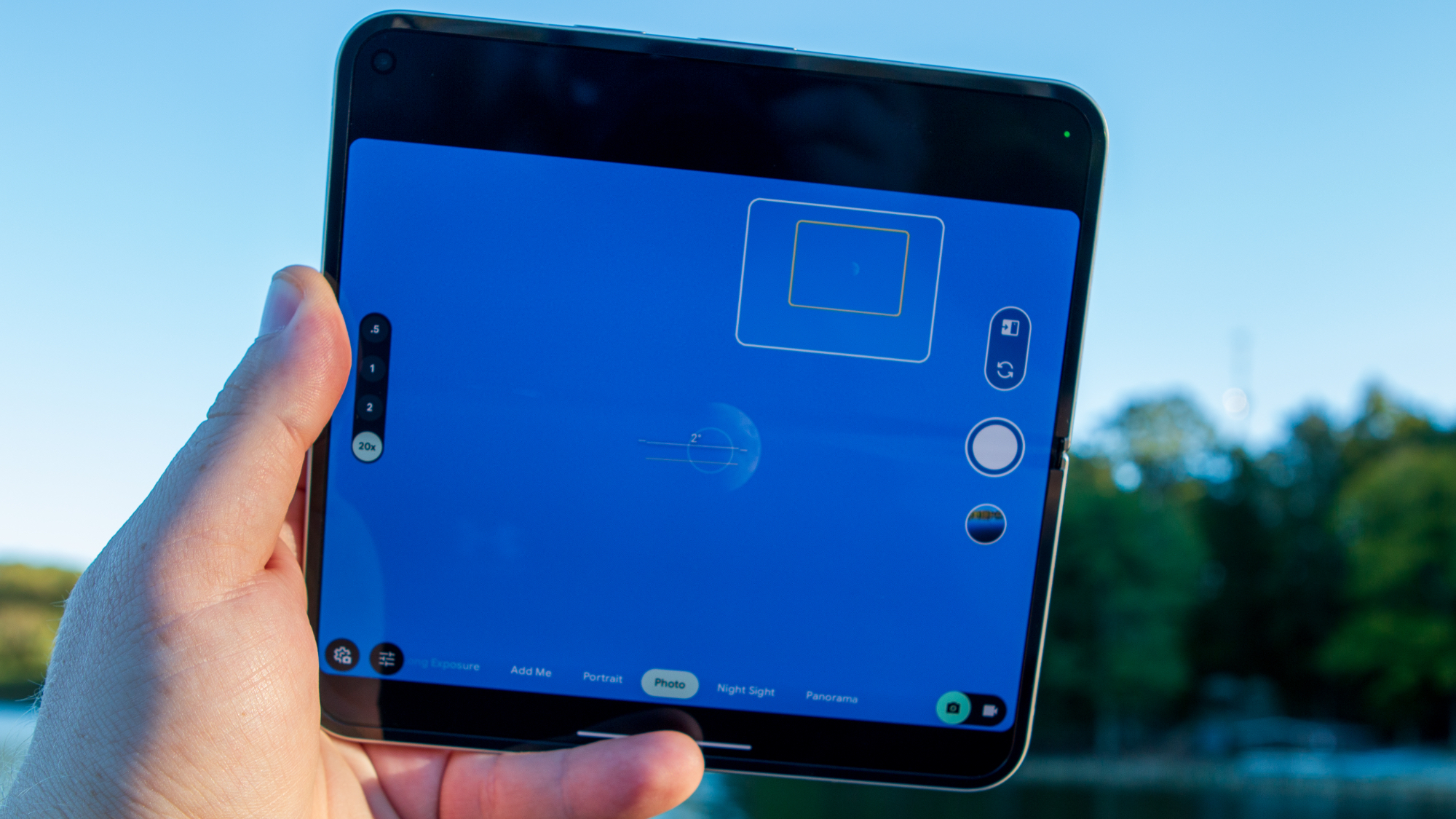
I pretty much already knew what I was getting into with the Pixel 9 Pro Fold, as the hardware is practically identical to the Pixel Fold. Instead, Google spent more time making tweaks to the photo-processing algorithm in an effort to provide better pictures.
Something I've noticed is that the pictures can be very hit or miss, regardless of the scenario in which they are being taken. Take the two photos below, for instance. They were taken around the same time of day but at two different locations. Even still, it looks as though I used two different phones.
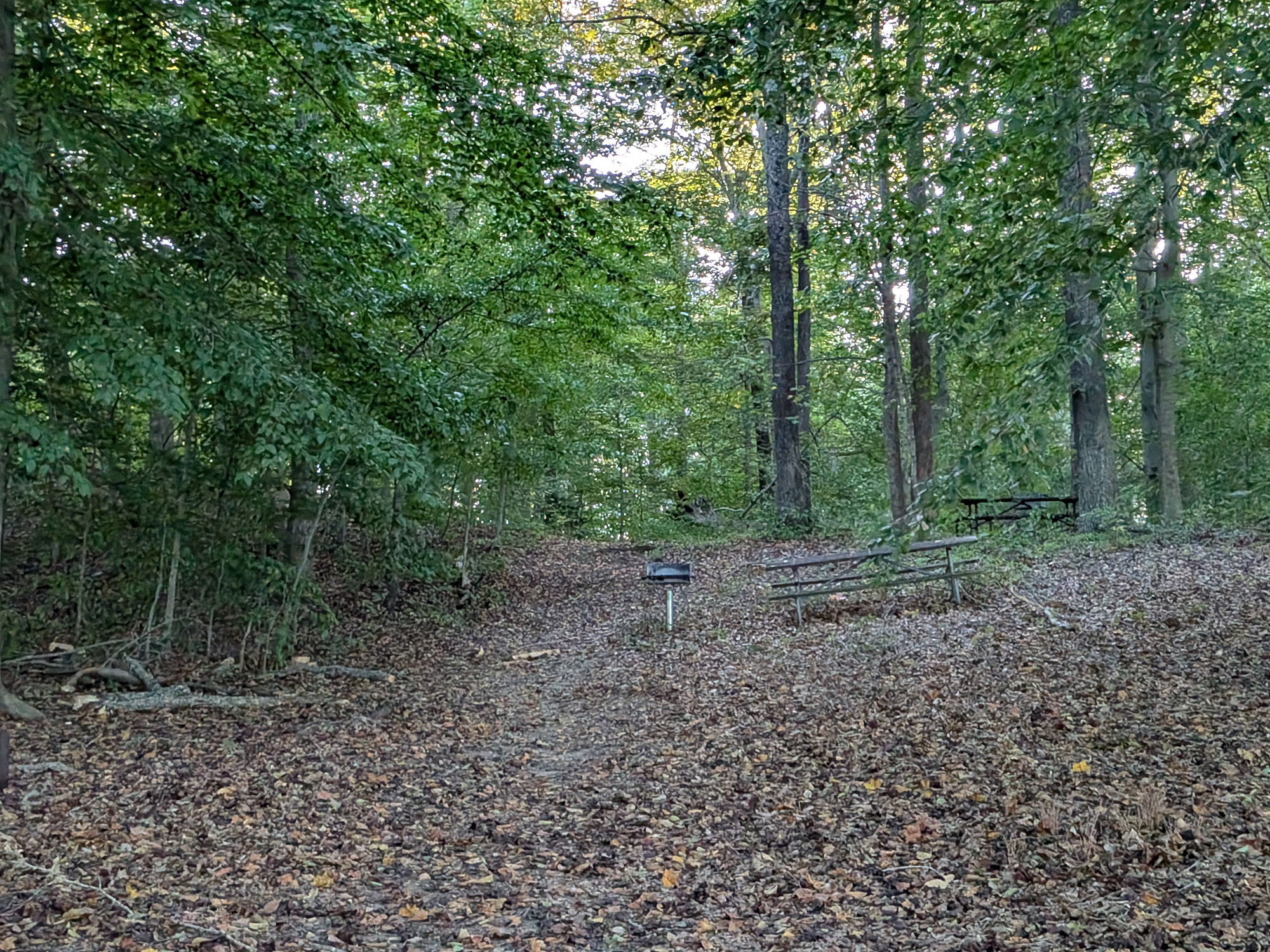
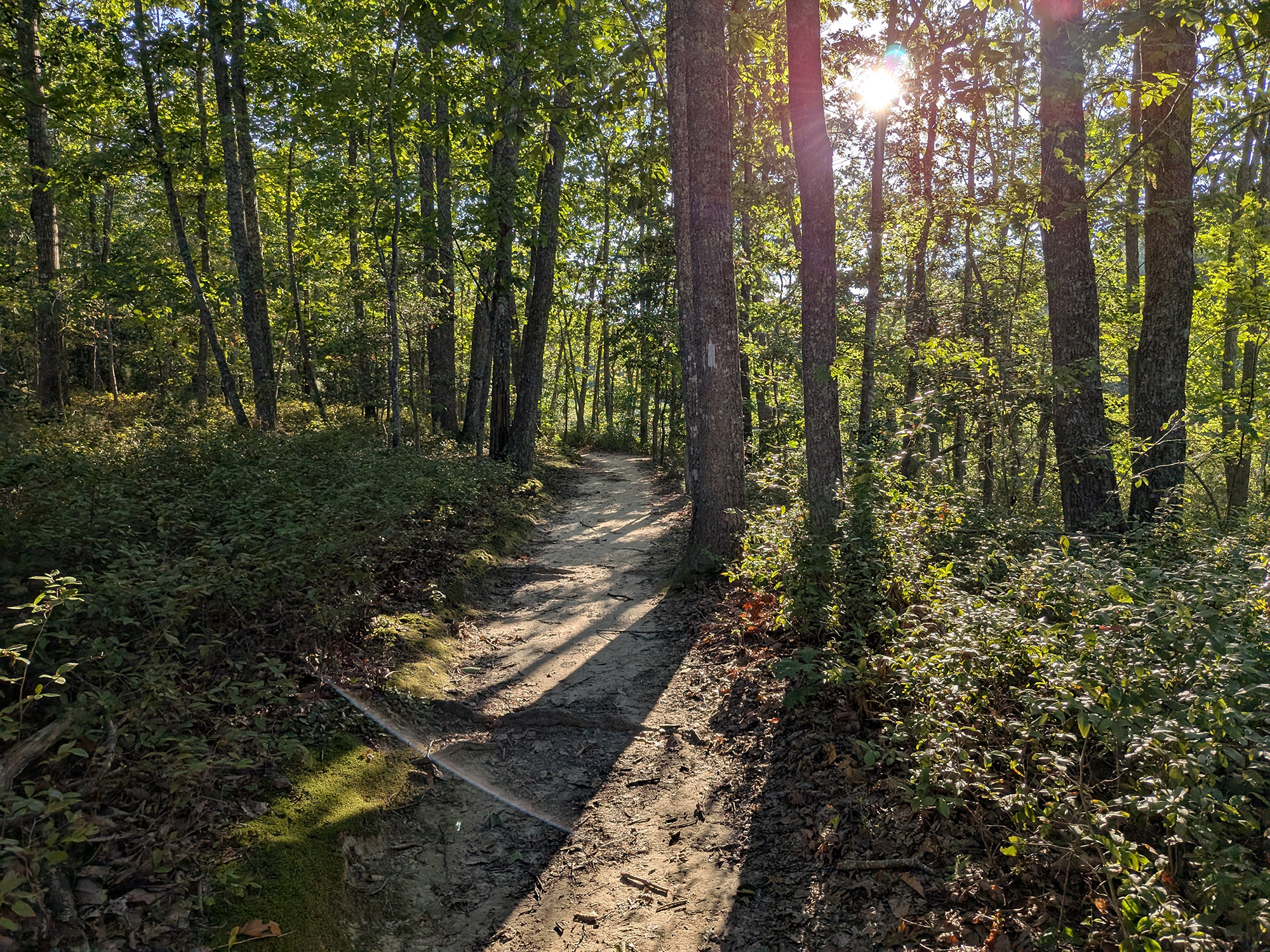
The photo on the left looks quite a bit more vivid, capturing the sun peaking through the trees, casting shadows on the trail. The other looks about as muted of a photo as you could get, with no life to the image and just looking rather bleh. It's not like I was taking a picture of anything specifically other than my surroundings, but it seems like a common trend.
There are also plenty of times when the Pixel 9 Pro Fold's camera shines and makes me happy to use it. One reason, specifically, is thanks to the "Made You Look" feature. As pointed out to me by Android Central's managing editor Derrek Lee, phones like the Motorola Razr Plus 2023 already offer something similar.
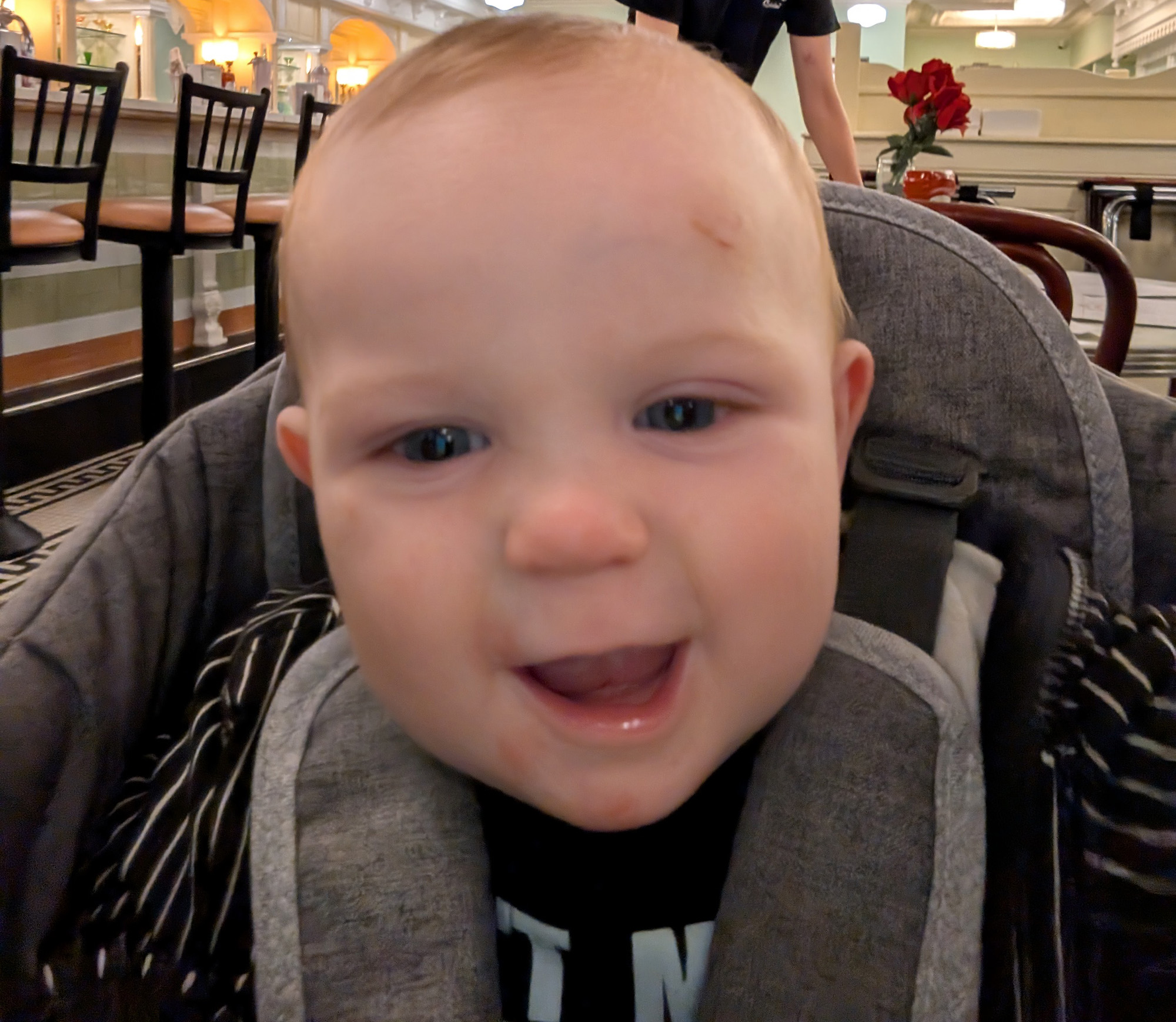
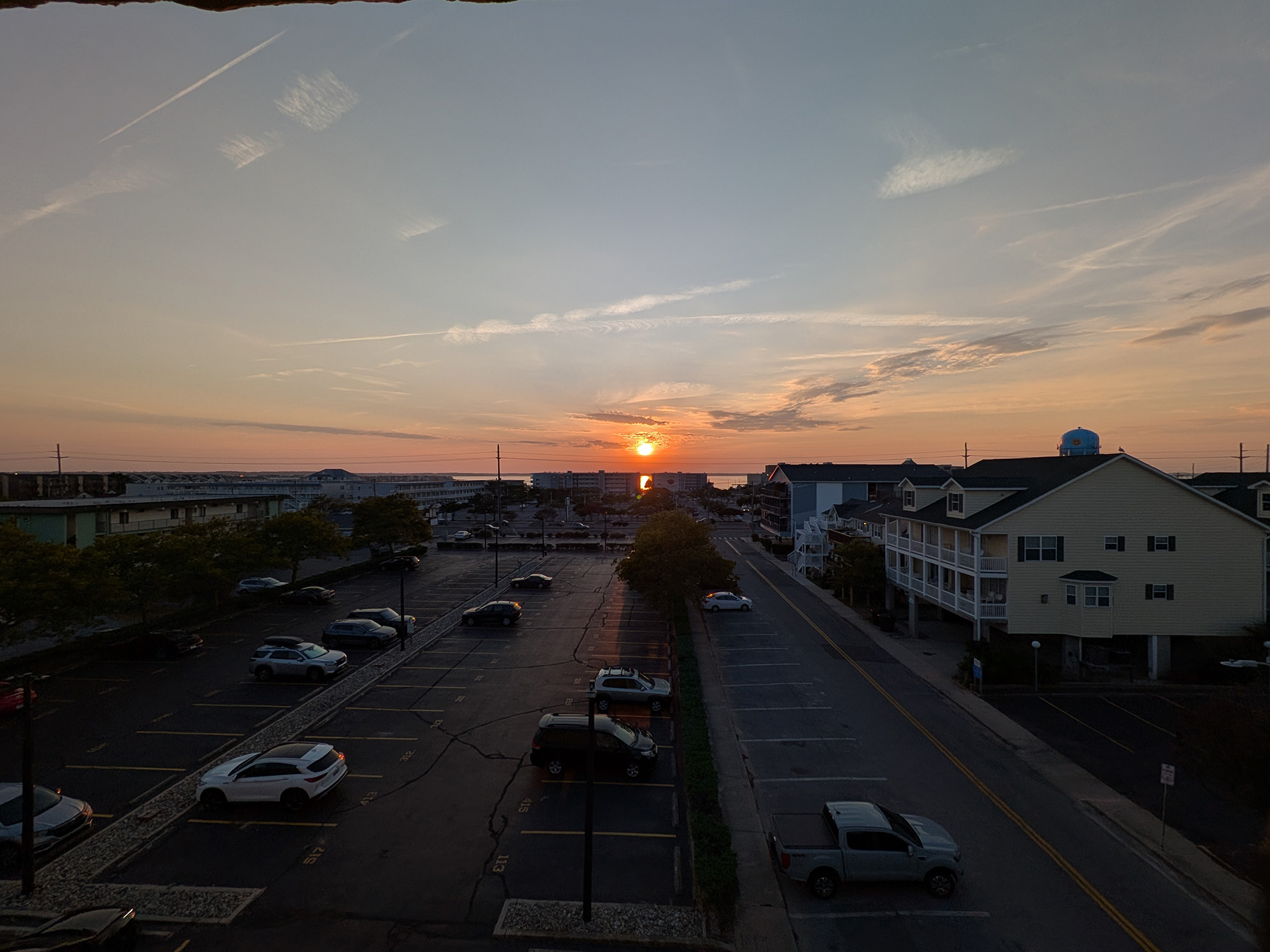


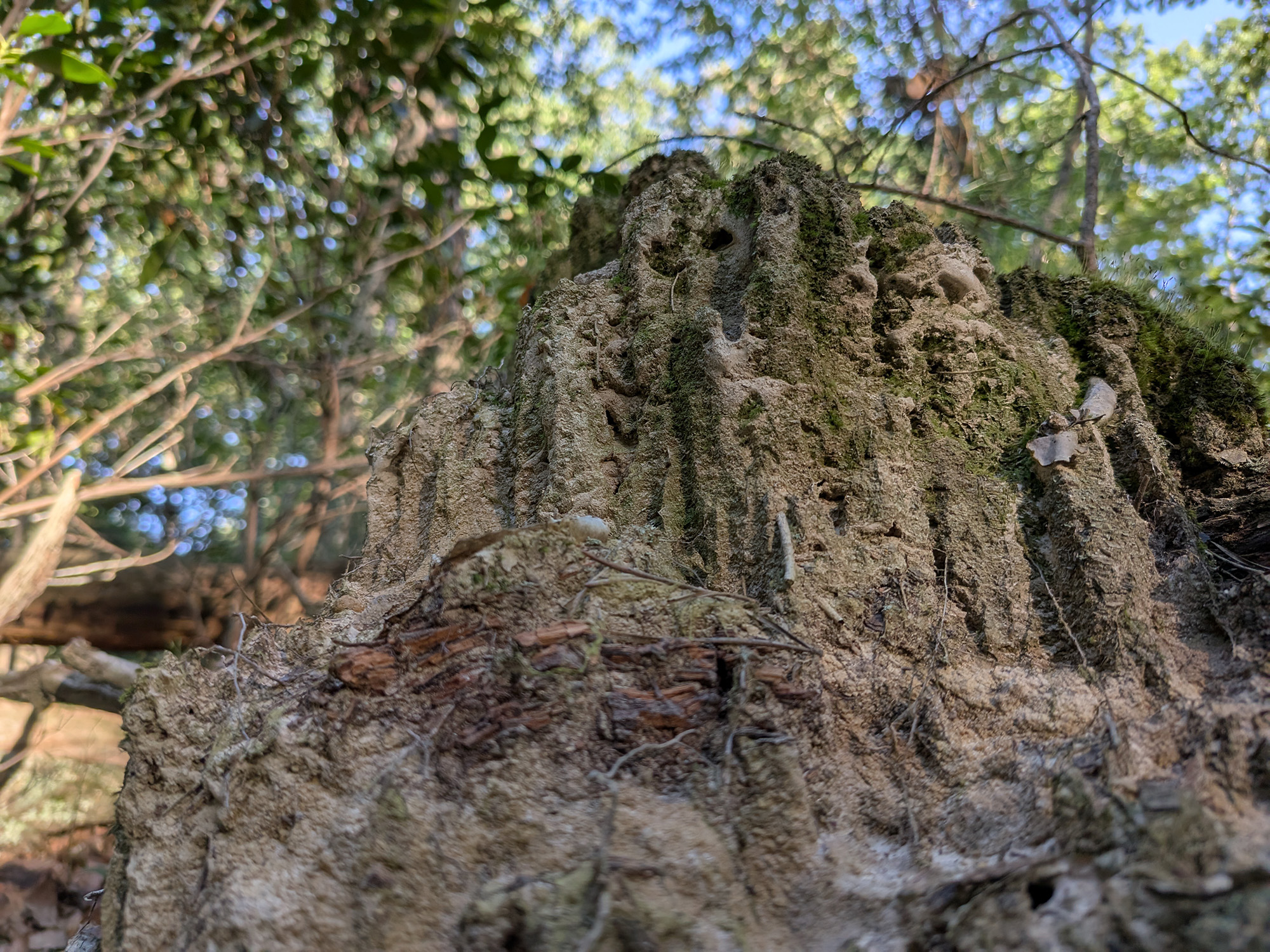
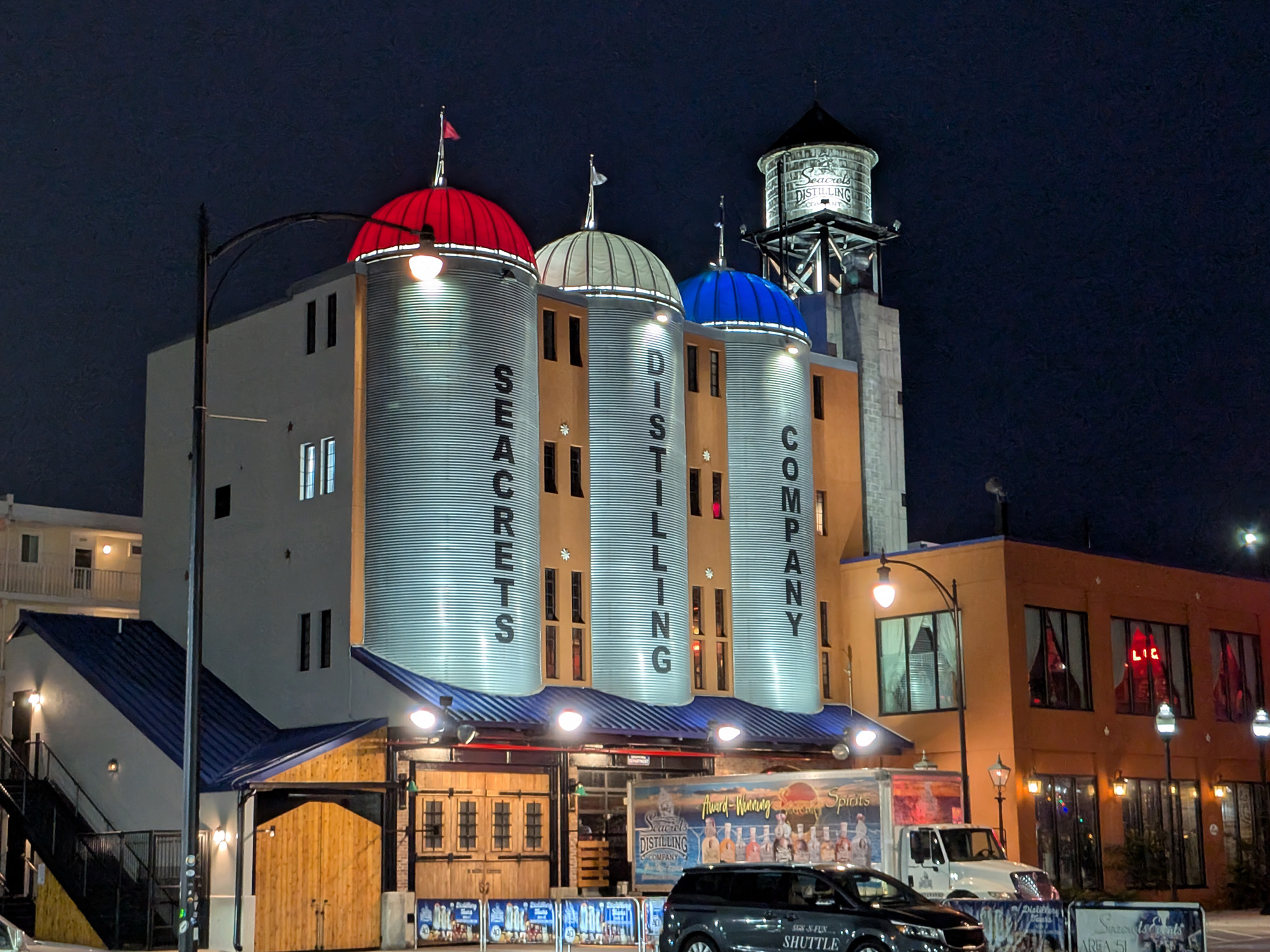

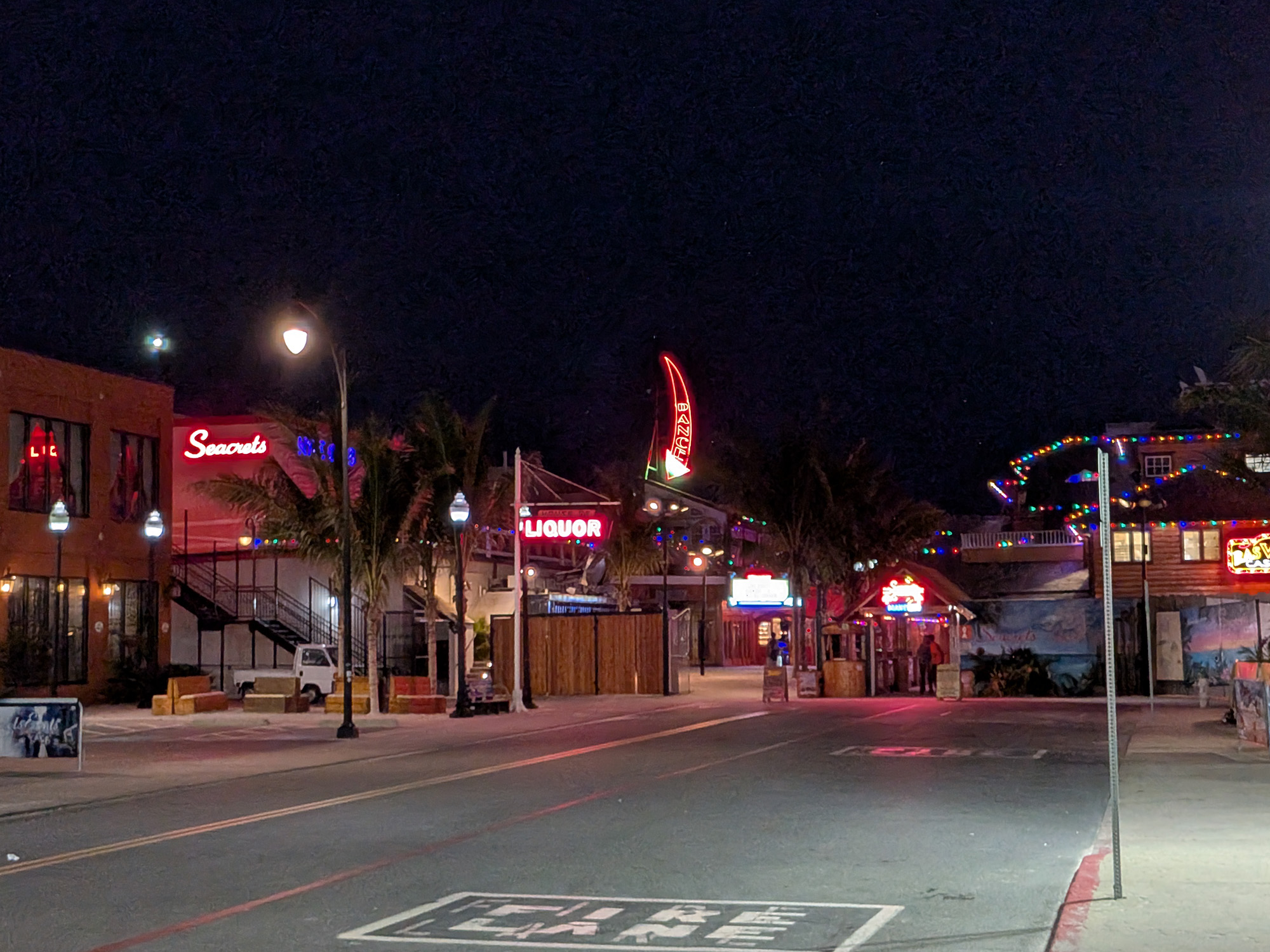
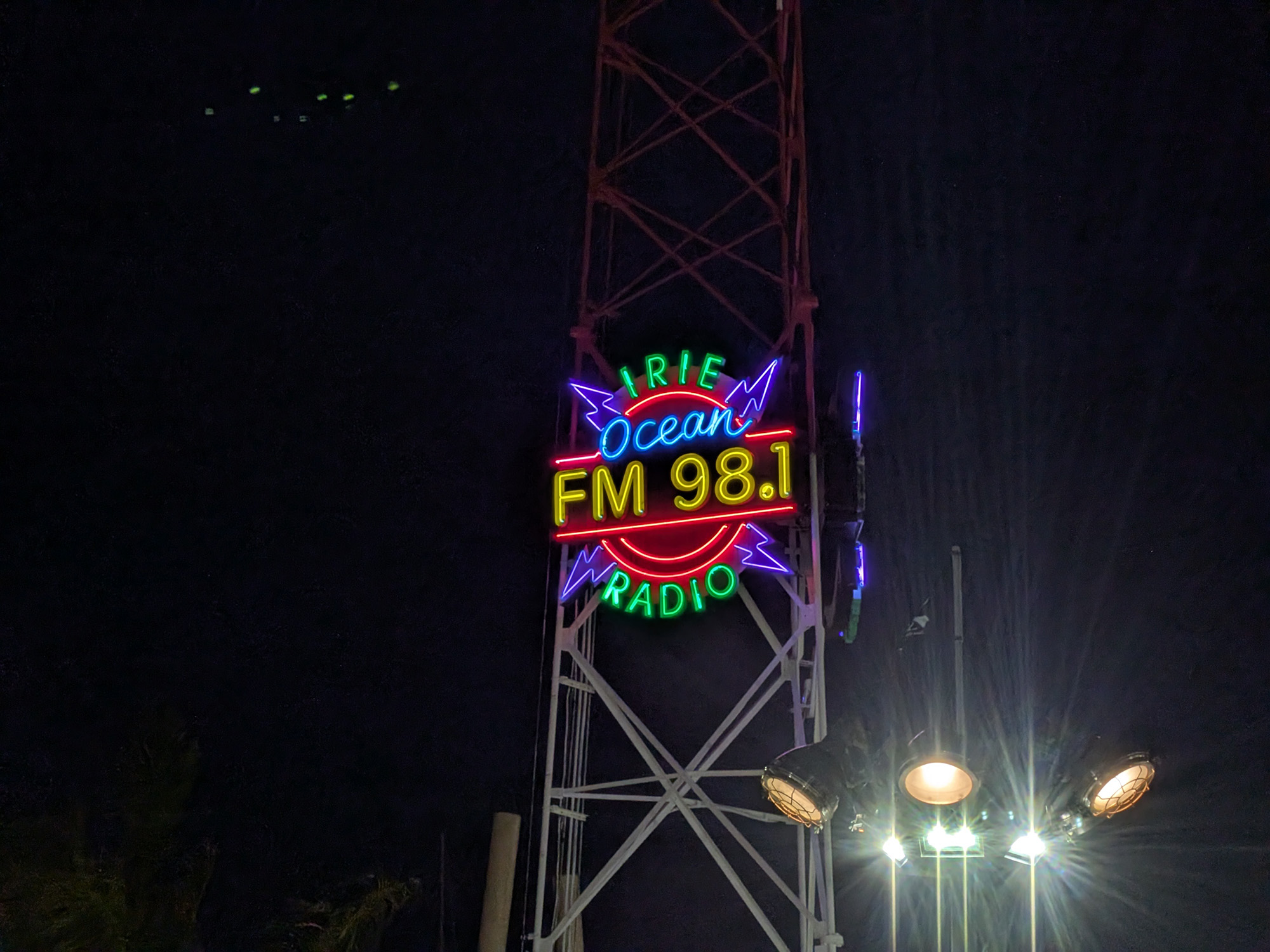
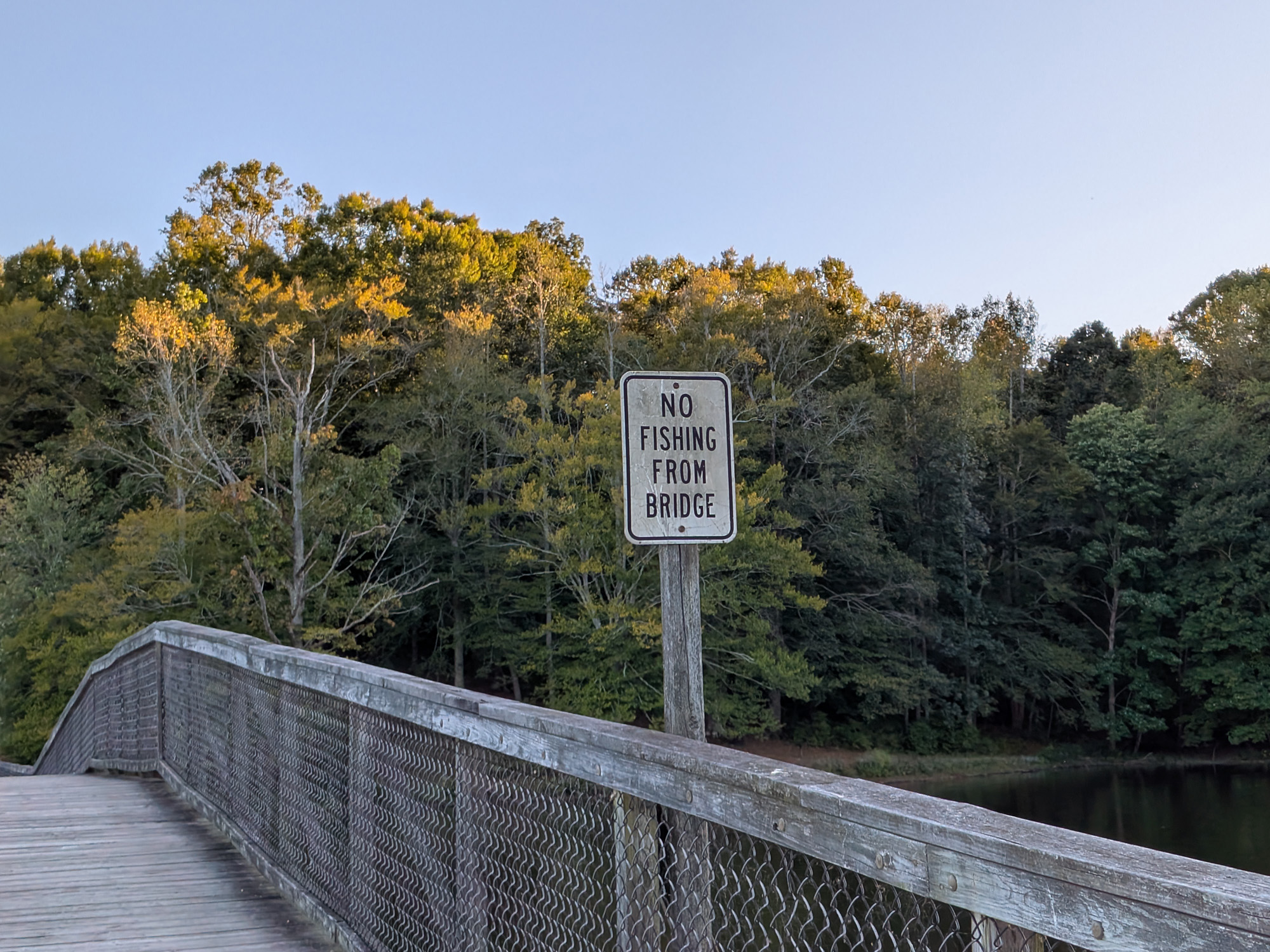
Nevertheless, this feature is particularly important to a parent of an eight-month-old who's even more easily distracted than his father. With Made You Look, I'm able to get him to pay attention long enough so that I can actually take a good picture.
This last part isn't specific to the Pixel 9 Pro Fold, but is for foldables in general — they're amazing. It's incredibly convenient to be able to not only take good pictures of the sky at night but also do so without needing to worry about tripods or propping the phone up.
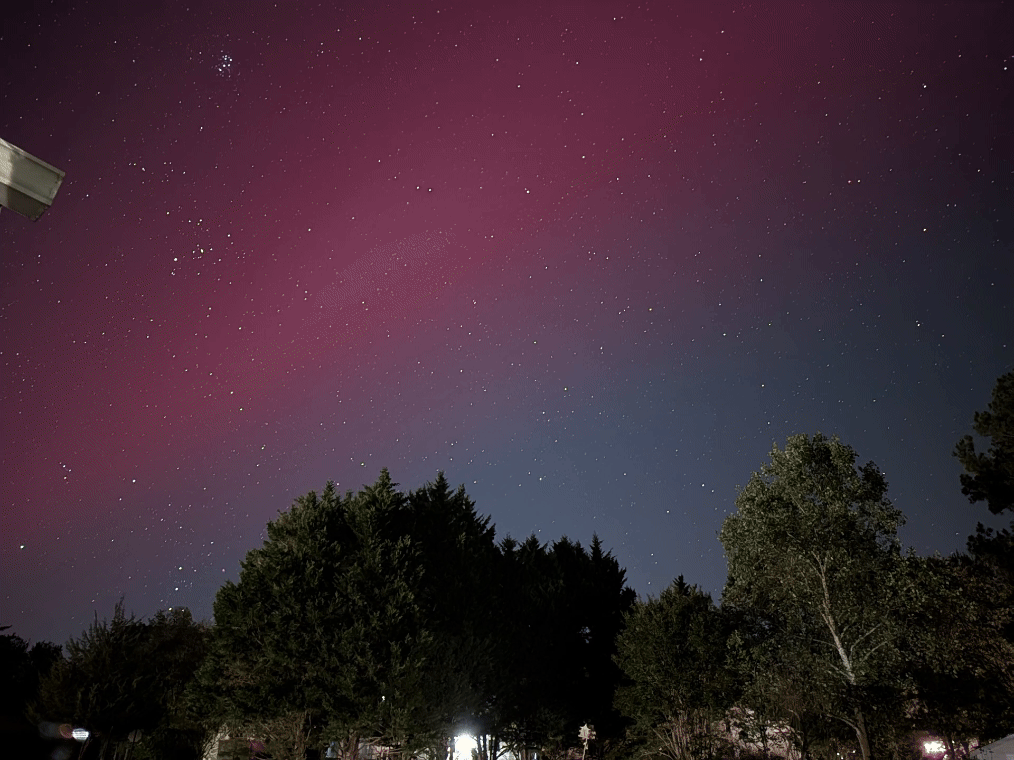
It doubles as its own tripod, and because of that, I was able to see the Northern Lights for the first time using the Pro Fold.
Google Pixel 9 Pro Fold: Competition
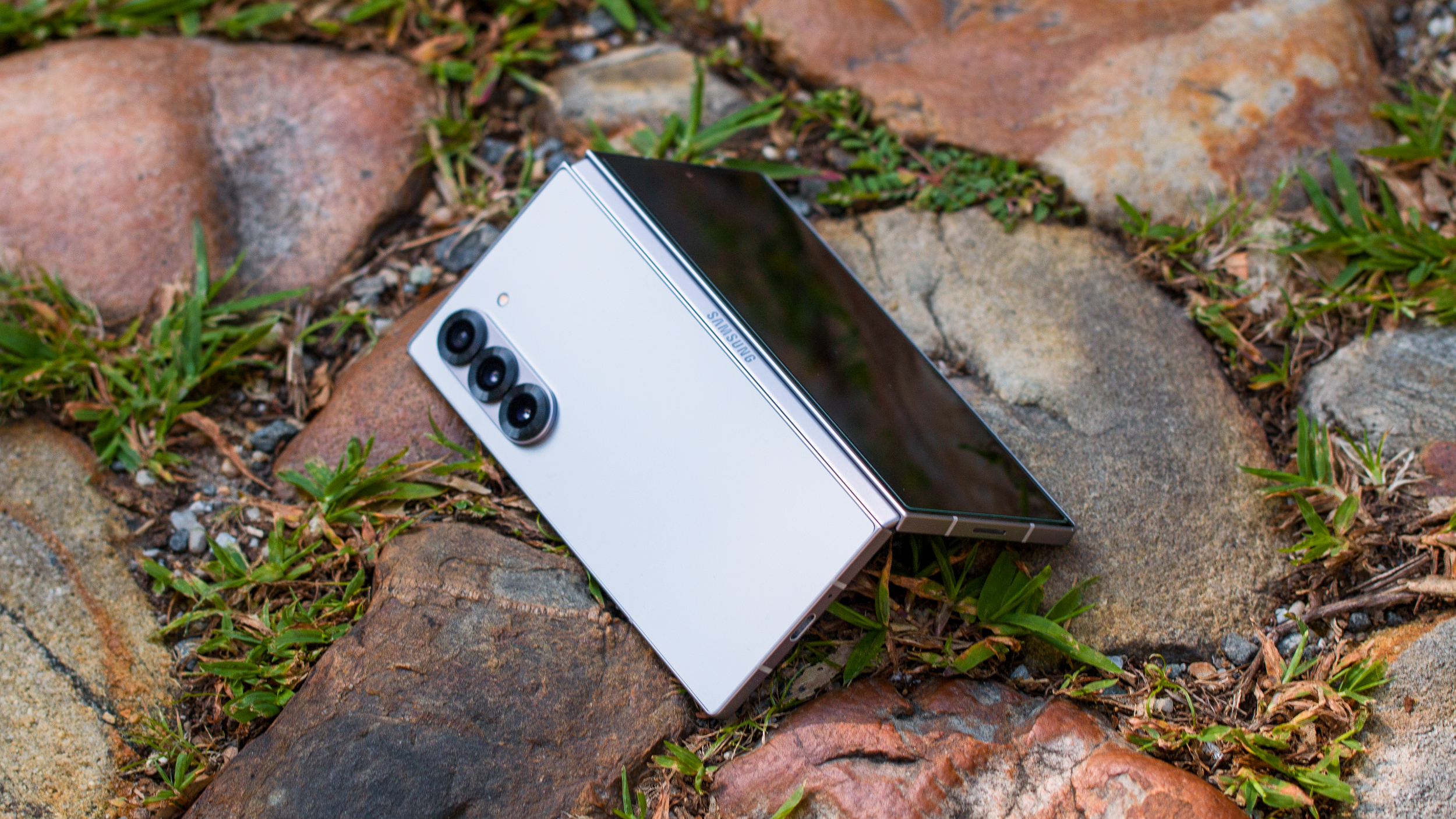
The biggest competition for Google is still the Galaxy Z Fold 6. That might be a different story if the OnePlus Open were available from carriers, but alas, it's not. Samsung still owns the foldable space in North America, and for good reason. Not only is the software experience refined, but you also have the option to use a stylus with the S Pen.
Ignoring carrier availability, I would argue that the OnePlus Open provides even stiffer competition than Samsung. Both the Open and 9 Pro Fold offer similar designs, seeing as both devices have cover screens that align better with traditional smartphones. While Open might have better camera hardware, Google still leads the way in image processing.
Google Pixel 9 Pro Fold: Should you buy it?
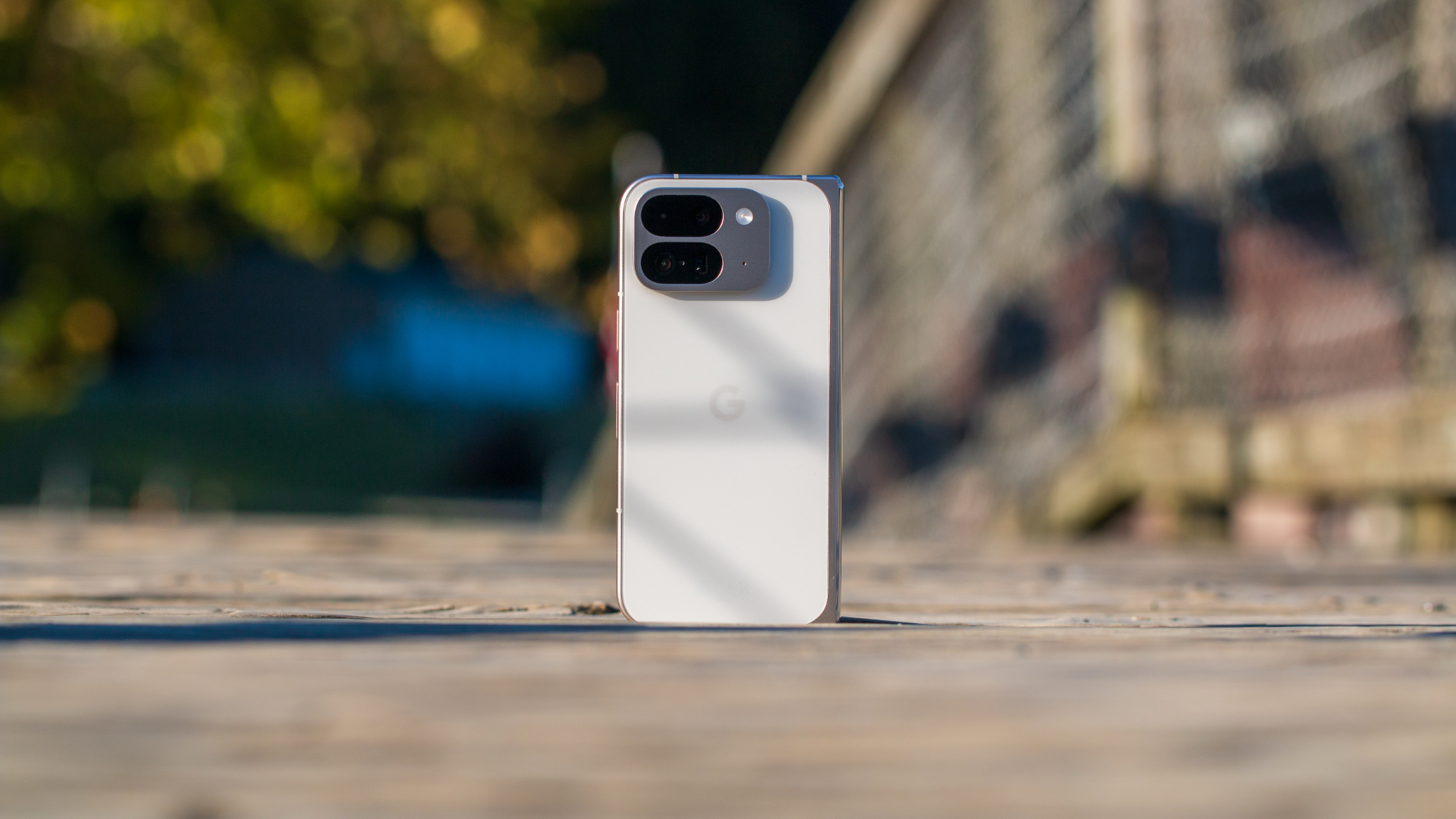
You should buy this if:
- You want a premium foldable phone with the Pixel experience.
- You want fantastic battery life.
- You would enjoy features like "Made You Look."
You shouldn't buy this if:
- You don't want to spend $1,800 on a smartphone.
- You want the best cameras or performance.
- You regularly use more than two apps at the same time.
I've done a lot of gushing over the Pixel 9 Pro Fold, and it's the phone that I couldn't wait to return to after the Pixel 9 Pro review was complete. For the first time in a long while, I feel as though Google managed to recapture some of the magic that it was missing. The original Pixel Fold was close but didn't take long to fall apart.
In the matter of whether you should pick up the 9 Pro Fold for yourself, I give this one a big ole' hearty recommendation. Other foldable phones might have more features and might be more powerful. But they don't offer the same comfortable experience as Google's latest offering. And while I'm trying to not put the cart before the horse, I can't wait to see what a successor could bring.
Simply incredible
It's mind boggling to think that Google could introduce such a drastically different device compared to the first iteration. However, we couldn't be more thankful that the 9 Pro Fold shares little with its predecessor.







